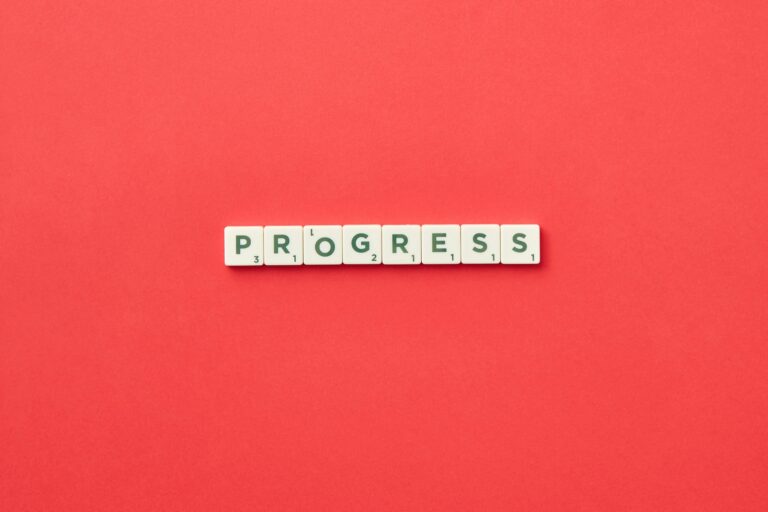How to develop a growth mindset: 15 strategies that actually work
Learn how to develop a growth mindset with 15 proven strategies that actually work. Transform challenges into opportunities and unlock your potential for success.
Tired of being stuck in the same patterns, watching everyone else level up while you’re sitting on the sidelines? Here’s the truth nobody wants to tell you: developing a growth mindset isn’t about positive thinking and motivational quotes. It’s about fundamentally rewiring how you approach every challenge, setback, and opportunity that comes your way.
Most people stay trapped because they’re waiting for permission to grow. They’re waiting to “feel ready” or for the “perfect moment.” But here’s what successful people know: growth mindset isn’t a feeling you wait for – it’s a choice you make every single day, especially when you don’t feel like it.
Ready to stop making excuses and start making progress? Let’s dive into the 15 strategies that will transform how you think, act, and achieve.
What is a growth mindset? (and why most people get it wrong)
A growth mindset is the belief that your abilities, intelligence, and talents can be developed through dedication, hard work, and learning from others. It’s not about telling yourself “I can do anything” – it’s about knowing that whatever you can’t do yet, you can learn.
Here’s what growth mindset actually looks like:
- You see challenges as chances to level up, not threats to avoid.
- You persist when things get tough instead of giving up at the first sign of difficulty.
- You view effort as the path to mastery, not a sign of weakness.
- You learn from criticism instead of getting defensive.
- You find inspiration in others’ success instead of feeling threatened.
Think about learning to drive. With a growth mindset, you know that practice and persistence will make you better. You expect it to be challenging, but you’re willing to put in the work because you believe improvement is possible.
Growth mindset vs fixed mindset
A fixed mindset is the killer of dreams. It’s the voice that says “I’m just not good at this” or “Some people are naturally talented, and I’m not one of them.” This mindset keeps you small, safe, and stuck.
If you’d like to know more about the difference between fixed and growth mindset, read Fixed vs growth mindset first.
Here’s a simple comparison:
- Challenges:
- Growth mindset: “This is going to push me, and that’s exactly what I need.”
- Fixed mindset: “This looks hard, I’ll probably fail, so why try?”
- Obstacles:
- Growth mindset: “Setbacks are data – what can I learn from this?”
- Fixed mindset: “I knew I wasn’t cut out for this.”
- Effort:
- Growth mindset: “The harder I work, the stronger I get.”
- Fixed mindset: “If I have to work this hard, I must not be naturally good at it.”
- Criticism:
- Growth mindset: “Tell me more – how can I improve?”
- Fixed mindset: “They just don’t understand me.”
- Success of others:
- Growth mindset: “What can I learn from their approach?”
- Fixed mindset: “They’re just lucky/naturally gifted.”
Picture two people in the same challenging situation. Sarah believes she’s “just not a math person” and avoids anything that involves numbers. John knows math is tough for him right now, but believes he can improve with practice and the right strategies. Guess who’s going to grow?
1. Embrace challenges (stop playing it safe)
Here’s what nobody tells you about comfort zones: they’re not actually comfortable. They’re familiar, which feels safe, but they’re also where dreams go to die. If you want to develop a growth mindset, you need to get comfortable being uncomfortable.
Step out of your comfort zone (one bold move at a time)
Everything you want is waiting for you on the other side of fear. But here’s the thing – you don’t have to jump off a cliff. You can start small and build momentum.
Your comfort zone challenge:
- At work: Volunteer for that project that scares you a little
- Personally: Learn something you’ve always thought was “too hard” for you
- Socially: Have a real conversation with someone who intimidates you
Start with one uncomfortable thing every day. Make it small enough that you can’t talk yourself out of it, but significant enough that you feel the stretch. When I started this practice, I began with tiny things like standing on public transport instead of looking for a seat (because I was terrified of people looking at me). Once that felt normal, I moved to bigger challenges.
The point isn’t to torture yourself – it’s to prove to your brain that you can handle more than you think. Every time you step outside your comfort zone and survive, you expand your capacity for growth.

Learn from failures and mistakes
Failure isn’t the opposite of success – it’s the raw material of success. But most people treat failures like dirty secrets instead of valuable data.
Einstein said it best: “A person who never made a mistake never tried anything new.”
When something doesn’t go as planned, ask yourself:
- What specific factors contributed to this outcome?
- What would I do differently next time?
- What did this teach me about my current approach?
- How can I use this experience to get better?
Stop trying to avoid failure. Start trying to fail faster and learn quicker.
2. Develop a passion for learning (become unstoppable)
Growth mindset people are learning addicts. They’re constantly feeding their minds new information, skills, and perspectives. They know that in a rapidly changing world, the person who stops learning gets left behind.
Read like your future depends on it
Reading isn’t just a hobby – it’s how you download decades of other people’s experiences directly into your brain. But most people read like they’re checking a box instead of mining for gold.
Make reading work for you:
- Morning fuel: Start your day with 15-30 minutes of reading something that challenges your thinking.
- Dead time transformation: Turn commute time into learning time.
- Night growth: End your day with insights that marinate in your mind while you sleep.
Don’t limit yourself to one genre. Read biographies of people who’ve achieved what you want. Dive into science fiction that stretches your imagination. Study history to understand patterns that repeat. Each book is a conversation with someone smarter than you in that specific area.

Take up new hobbies or skills (because you can)
Learning new skills isn’t just fun – it’s proof to your brain that you’re capable of growth. Every time you master something new, you strengthen your belief in your ability to learn anything.
Pick something that excites and scares you:
- Creative: Photography, writing, painting, music…
- Physical: Rock climbing, martial arts, dance…
- Intellectual: Coding, languages, chess…
- Practical: Cooking, gardening, woodworking…
Start small, practice consistently, and celebrate progress. The skill itself matters less than the confidence you build in your ability to learn.
3. Build unskahable resilience
Resilience isn’t about being tough all the time. It’s about bouncing back faster and stronger every time life knocks you down. And trust me – life will knock you down. The question is: how quickly do you get back up?
Practice mindfulness and meditation (train your mental muscles)
Your mind is like a muscle – the more you train it, the stronger it gets. Mindfulness and meditation are like going to the gym for your brain.
Start simple:
- Breathing practice: 5 minutes focusing only on your breath.
- Mindful moments: Pay attention to what you’re doing instead of going through the motions.
- Meditation: Start with guided apps and work up to longer sessions.
This isn’t about becoming zen – it’s about developing the mental strength to stay focused when everything around you is chaos.

See setbacks as learning opportunities (reframe your failures)
Michael Jordan said it perfectly: “Obstacles don’t have to stop you. If you run into a wall, don’t turn around and give up. Figure out how to climb it, go through it, or work around it.”
Every setback is asking you one question: “How badly do you want this?” Your answer determines whether you grow or give up.
When things go wrong:
- Step 1: Feel the disappointment (it’s human).
- Step 2: Ask “What is this teaching me?”
- Step 3: Make a plan to apply the lesson.
- Step 4: Take action immediately.
The difference between people who succeed and people who don’t isn’t the number of setbacks they face – it’s how quickly they turn those setbacks into comebacks.
4. Seek feedback
Feedback is the breakfast of champions, but most people are on a feedback diet. They avoid it, deflect it, or take it personally instead of seeing it for what it really is: free coaching from the universe.
Accept constructive criticism (your growth accelerator)
Constructive criticism isn’t an attack on who you are – it’s intelligence about how you can improve. But your ego doesn’t know the difference, so you have to train it.
When receiving feedback:
- Say thank you: Even if it hurts, someone just gave you valuable information.
- Listen without defending: Your first instinct will be to explain or justify. Resist it.
- Ask clarifying questions: “Can you give me a specific example?” “What would improvement look like?”
- Take notes: Write it down. This shows respect and helps you remember.
Act on feedback (turn information into transformation)
Collecting feedback without acting on it is like buying gym equipment and never using it. The value is in the implementation, not the information.
Your feedback action plan:
- Prioritize: Which feedback will have the biggest impact?
- Plan: Break improvements into specific, actionable steps.
- Practice: Implement changes consistently.
- Follow up: Ask for feedback on your improvements.
The people who grow fastest are the ones who can hear hard truths and transform them into better results.
5. Develop a positive mindset (but make it real)
Positive thinking without action is just wishful thinking. Real positivity comes from taking control of your thoughts and directing them toward growth, not just hoping everything will work out.
Use positive affirmations (that actually work)
Affirmations aren’t magic spells. They’re mental training exercises that help you reprogram limiting beliefs. But they only work if you make them specific and believable.
Instead of: “I am successful” Try: “I am committed to taking one action every day toward my goals”
Instead of: “I never fail” Try: “I learn something valuable from every experience”
Repeat them during dead time – walking, commuting, getting ready. The goal is to replace negative mental chatter with empowering self-talk. Want to dive deeper into affirmations? Check out The power of affirmations: A complete beginner’s guide.
Surround yourself with positive influences (choose your circle wisely)
You become the average of the five people you spend the most time with. If you’re surrounded by complainers, excuse-makers, and dream-crushers, guess what mindset you’ll develop?
Evaluate your circle:
- Who lifts you up vs. brings you down?
- Who challenges you to grow vs. enables your excuses?
- Who celebrates your wins vs. minimizes your achievements?
This doesn’t mean cutting people off, but it does mean being intentional about who gets your time and energy. Seek out people who are growing, learning, and pushing themselves. Their mindset is contagious. new perspectives, and help you stay motivated, even when facing challenges.

6. Set realistic goals (that actually get you results)
Goal setting isn’t about writing down your wishes. It’s about creating a roadmap that takes you from where you are to where you want to be. Most people fail at goals because they set them wrong.
Short-term vs. long-term goals (your growth GPS)
Short-term goals are your daily and weekly wins that build momentum:
- Finish that course you started.
- Have one difficult conversation.
- Complete a challenging workout.
Long-term goals are your big vision that gives direction:
- Build a business that gives you freedom.
- Develop expertise in your field.
- Create the lifestyle you actually want.
Short-term goals are stepping stones. Long-term goals are the destination. You need both to make real progress.s.
SMART goals framework (make your goals bulletproof)
Vague goals create vague results. SMART goals create specific outcomes.
- Specific: “Get better at public speaking.” becomes “Give one presentation to my team this month.”
- Measurable: “Read more.” becomes “Read one book per month.”
- Achievable: Challenging but realistic based on your current situation.
- Relevant: Aligned with your bigger vision and values.
- Time-bound: Has a deadline that creates urgency.
SMART goals turn dreams into plans and plans into results.your efforts are directed and effective, making it easier to achieve meaningful growth.
7. Emphasize effort over outcome (process over prize)
The outcome obsession is killing your growth. When you only celebrate final results, you miss all the learning that happens during the journey. Growth mindset people fall in love with the process.
Celebrate small wins (fuel your motivation)
Every expert was once a beginner. Every breakthrough started with a small step. If you only celebrate the big wins, you’ll run out of motivation before you get there.
Celebrate daily efforts:
- Showing up when you didn’t feel like it.
- Pushing through when it got difficult.
- Learning something new, even if it’s small.
Keep a win journal. Write down three things you did well each day. This trains your brain to notice progress instead of just problems.

Focus on the process (master the journey)
Results are lagging indicators. They tell you what happened. Process is a leading indicator. It tells you what’s going to happen.
Instead of: “I want to lose 20 pounds.” Focus on: “I will work out 4 times per week and prep healthy meals on Sunday.”
Instead of: “I want to get promoted.” Focus on: “I will develop one new skill each quarter and take on challenging projects.”
When you master the process, the results take care of themselves.
8. Collaborate and share knowledge (grow together)
Growth isn’t a solo sport. The fastest way to accelerate your development is to connect with others who are on the same journey.
Join communities and groups (find your tribe)
Surround yourself with people who are playing the same game at a higher level. Communities provide accountability, support, and collective wisdom.
Look for:
- Professional groups in your industry,
- Online communities around your interests,
- Local meetups and networking events,
- Mastermind groups focused on growth…
The goal isn’t networking for the sake of networking. It’s finding people who challenge you to level up.ive environment accelerates your learning and reinforces the growth mindset.

Mentor others (teach to learn)
Teaching is one of the fastest ways to deepen your own understanding. When you mentor someone, you’re forced to articulate what you know clearly and often discover gaps in your own knowledge.
Mentoring benefits you by:
- Solidifying your expertise,
- Developing leadership skills,
- Gaining fresh perspectives,
- Building your network…
Find someone who’s a few steps behind you on a journey you’ve already taken. Your experience becomes their shortcut.ive. It’s a mutually beneficial process where both mentor and mentee grow.
9. Maintain a healthy lifestyle (your body fuels your mind)
Your mindset lives in your body. If your body is tired, stressed, and poorly nourished, your mind can’t perform at its best. Physical health and mental growth are connected.
Regular exercise (brain fuel)
Exercise doesn’t just build muscles – it builds better brains. Physical activity increases blood flow to the brain, improves memory, and reduces stress hormones that interfere with learning.
Find something you actually enjoy:
- Morning walks that clear your head.
- Sports that make you competitive.
- Gym sessions that make you feel strong.
- Dancing that makes you feel alive.
The best exercise is the one you’ll actually do consistently.

Balanced diet and sleep (foundation fundamentals)
Your brain needs proper fuel and recovery to function optimally. Poor nutrition and sleep deprivation sabotage even the best intentions.
Sleep optimization:
- Same bedtime and wake time every day.
- Dark, cool, quiet environment.
- No screens for the hour before bed.
Nutrition basics:
- Eat real food, not processed junk.
- Stay hydrated throughout the day.
- Don’t skip meals and crash your energy.
When your body feels good, your mind is ready to grow.ut also enhance cognitive abilities and emotional resilience.
10. Practice gratitude (shift your focus)
Gratitude isn’t about pretending everything is perfect. It’s about training your brain to notice what’s working instead of only seeing what’s broken. This shift in attention creates more mental space for growth.
Daily gratitude journals (rewire your brain)
Keeping a daily gratitude journal can be a simple yet powerful way to practice gratitude. By Five minutes of writing down what you’re grateful for can literally rewire your brain for positivity. But make it specific and meaningful.
Instead of: “I’m grateful for my family.” Write: “I’m grateful my sister helped me practice my presentation and gave me honest feedback.”
I keep my gratitude journal on my phone and send myself a message each morning. It becomes a record I can look back on when I need a reminder of how much is going right.
Express appreciation to others (create positive cycles)
When you acknowledge others’ efforts and contributions, you create an environment where everyone feels valued and motivated to keep growing.
Make appreciation specific:
- “Thank you for staying late to help with the project.”
- “I appreciate how you explained that concept so clearly.”
- “Your encouragement when I was doubting myself meant everything.”
Gratitude isn’t just a feeling – it’s an action that lifts everyone around you. Need specific gratitude exercises? Try these Best gratitude exercises to boost your mood + journal prompts.

11. Visualize success (see it before you be it)
Visualization isn’t daydreaming. It’s mental rehearsal that prepares your brain for success. Athletes have used this technique for decades because it works.
Visualization techniques (mental training)
Daily practice: Spend 5-10 minutes each morning visualizing yourself successfully handling the day’s challenges.
Detailed imagery: Don’t just see the outcome – feel the confidence, hear the sounds, experience the emotions.
Process visualization: See yourself doing the work, not just enjoying the results.
Overcome obstacles: Visualize challenges arising and yourself handling them calmly and effectivelyour mind’s belief in your ability to achieve your goals, which can lead to better performance and outcomes.
Create vision boards (see your success before you live it)
Vision boards turn abstract goals into concrete images that keep your objectives front and center.
How to create one that works:
- Use specific images that represent your goals.
- Include words and phrases that inspire action.
- Place it where you’ll see it daily.
- Update it as your goals evolve.
The act of creating the board is as important as having it. The process forces you to clarify what you really want.

12. Stay curious (never stop asking)
Curiosity is the engine of growth. When you stop being curious, you stop growing. The moment you think you know everything about something is the moment you start falling behind.
Ask questions (challenge everything)
Questions are more powerful than answers because they open possibilities instead of closing them.
Powerful questions to ask:
- “How could this failure actually be useful?”
- “What if I tried a different approach?”
- “What would someone who’s already successful at this do?”
- “What am I not seeing that I should be seeing?”
Explore new ideas (expand your world)
Growth requires exposure to new concepts, perspectives, and ways of thinking. Seek out ideas that challenge your current beliefs and push your thinking.
Ways to explore:
- Read books outside your comfort zone.
- Listen to podcasts in unfamiliar fields.
- Attend workshops on topics you know nothing about.
- Have conversations with people who disagree with you.
Curiosity keeps your mind flexible and open to possibilities you haven’t considered yet.

13. Accept constructive criticism (your fast track to improvement)
Criticism feels personal, but it’s actually professional. The ability to separate your ego from feedback is one of the most valuable skills you can develop.
Listen actively (receive the gift)
When someone gives you constructive criticism, they’re giving you their time, attention, and insights. Treat it as the valuable gift it is.
How to listen for growth:
- Thank them for caring enough to help you improve.
- Stay calm and resist the urge to defend.
- Ask clarifying questions to understand better.
- Take notes to show you’re taking it seriously.
Implement suggestions (turn feedback into results)
Receiving feedback means nothing if you don’t act on it. Implementation is where the real growth happens.
Your action steps:
- Evaluate: Which feedback will have the biggest impact?
- Plan: Break it down into specific actions.
- Execute: Start implementing immediately.
- Follow up: Check back to see if you’ve improved.
The people who grow fastest are the ones who can hear hard truths and transform them into better results.
14. Focus on self-improvement (own your growth)
Self-improvement isn’t selfish – it’s necessary. You can’t give what you don’t have, and you can’t lead others where you haven’t been yourself.
Self-assessment and reflection (know yourself)
You can’t improve what you don’t measure. Regular self-assessment helps you identify patterns, progress, and areas that need attention.
Weekly reflection questions:
- What did I do well this week?
- Where did I fall short of my standards?
- What patterns am I noticing in my behavior?
- What one thing would make the biggest difference next week?
Honest self-reflection is uncomfortable but essential. It’s the difference between random activity and intentional growth.

Personal development plans (your growth blueprint)
A personal development plan is your roadmap for becoming the person you want to be. Without a plan, you’re just hoping growth will happen accidentally.
Create your plan:
- Assess: Where are you now?
- Envision: Where do you want to be?
- Gap analysis: What’s missing between here and there?
- Action steps: What specific actions will close the gap?
- Timeline: When will you take each action?
- Review: How will you track and adjust your progress?
15. Celebrate effort and progress (acknowledge your growth)
Most people are terrible at celebrating progress. They dismiss small wins, minimize their efforts, and only acknowledge success when it’s “big enough.” This kills motivation and slows growth.
Reward yourself (fuel your motivation)
Celebrating progress isn’t about participation trophies. It’s about acknowledging the effort that creates results and reinforcing the behaviors that lead to growth.
Celebration ideas:
- Take yourself out for a nice meal after completing a challenging project.
- Buy something you’ve wanted after reaching a milestone.
- Share your wins with people who support your growth.
- Take a day off to enjoy your progress.
The key is matching the celebration to the effort, not just the outcome.
Track your progress (see how far you’ve come)
What gets measured gets managed. Tracking your progress helps you see growth that might otherwise feel invisible.
Ways to track:
- Keep a daily or weekly journal of actions taken.
- Create visual charts showing improvement over time.
- Take photos or videos to document your journey.
- Set regular check-ins to review your development.
Progress tracking isn’t about perfectionism – it’s about awareness and motivation.

Your growth mindset journey starts now
Developing a growth mindset isn’t a destination – it’s a daily practice. It’s choosing to see challenges as opportunities, setbacks as education, and effort as the price of admission to the life you want.
You have everything you need to start growing right now. You don’t need perfect conditions, unlimited time, or special talents. You just need to begin.
The question isn’t whether you’re capable of growth – you are. The question is whether you’re willing to do the work, especially when it’s uncomfortable, especially when you don’t feel like it, especially when progress feels slow.
Your next steps:
- Choose one strategy from this list that resonates most with you.
- Take one small action today to implement it.
- Commit to consistency for the next 30 days.
- Track your progress and adjust as needed.
Stop waiting for permission, perfect timing, or the “right” moment. Your growth mindset journey begins with your next decision.
Which breakthrough are you ready for?
Transform your mindset, transform your life
Ready to begin but not sure which strategy to tackle first? Our assessment quiz creates a personalized roadmap based on your current mindset patterns.
That’s where my workbooks come in. They take everything you’ve learned here and turn it into your daily practice, your new way of thinking, your breakthrough moment.
Based on what resonated most with you, here are your next steps:
Struggling with negative self-talk? → Become your own cheerleader workbook – transform that inner critic into your biggest supporter.
Stuck because of limiting beliefs? → Limiting beliefs workbook – rewrite those “I can’t” thoughts into “I absolutely can.”
Need unshakeable confidence? → Confidence workbook – stop doubting yourself and start believing in your abilities.
Want to be kinder to yourself while you grow? → Self-compassion workbook – learn to treat yourself with the kindness you deserve.
Don’t let this moment of inspiration fade. Your growth mindset journey starts with one decision – the decision to invest in yourself and take action.








I’ve been following this blog for years and it’s amazing to see how much it has grown and evolved Congratulations on all your success!
Aww! Thank you very much!